Can Mormons Divorce? Understanding LDS Church Divorce Teachings 22 Oct 10:00 AM (14 hours ago)
Many people ask, “Can Mormons divorce?” Members and non-members alike wonder what the Church believes. According to LDS Church divorce teachings, marriage is a sacred promise meant to last forever. Still, the Church understands that not every marriage succeeds.
In the Bible, Jesus said, “What God has joined together, let no man separate” (Matthew 19:6). This shows the Lord’s plan for marriage. Yet Elder Dallin H. Oaks once taught that because people have agency, “the Lord permits divorce.” These words show that while eternal marriage is the goal, the Lord allows divorce when it becomes necessary for peace, safety, or healing.
Can Mormons Divorce? Understanding LDS Church Divorce Teachings
Marriage, as the Lord taught in Doctrine and Covenants 49:15, is a sacred union given by God. Still, people make mistakes, and some marriages fail even after much effort. The LDS Church divorce teachings recognize that agency and imperfection sometimes lead to separation.
The Church explains in Gospel Topics: Divorce that some marriages end because of “poor choices and selfishness.” For that reason, divorce should come only after sincere prayer, counsel, and effort to forgive.
Even when divorce happens, God’s mercy remains. As Psalm 103:8 reminds us, “The Lord is merciful and gracious, slow to anger, and full of mercy.” These words bring comfort and hope to anyone going through the pain of separation.
Civil Divorce vs. Temple Sealing in LDS Church Divorce Teachings
A civil divorce ends a marriage legally. However, a temple sealing is eternal. The Church teaches in the General Handbook that “a civil divorce does not automatically cancel a temple sealing.” Only priesthood leaders can process a sealing cancellation or clearance.
This difference is important in LDS Church divorce teachings. Civil law can end a marriage on earth, but spiritual covenants continue until the Church officially clears them. As Doctrine and Covenants 131:1–2 explains, entering “the new and everlasting covenant of marriage” leads to eternal blessings. Even so, the Lord offers understanding and guidance for those whose marriages end in hardship.
Membership and Worthiness After Divorce: Hope in LDS Church Divorce Teachings
LDS Church divorce teachings assure members that divorce does not remove them from God’s love or from Church fellowship. Divorced members can still take the sacrament, hold callings, and attend the temple if they remain worthy.
President Gordon B. Hinckley taught, “There may be now and again a legitimate cause for divorce. But for most cases, divorce is unnecessary and can be healed with faith and forgiveness.”
This message reflects the Savior’s compassion. LDS Church divorce teachings invite everyone to forgive and seek peace. As Ephesians 4:32 reminds us, we should “be kind and tenderhearted, forgiving one another” as Christ forgave us.
Healing and Forgiveness
Divorce can bring deep pain, but through forgiveness, hearts find peace. The Savior’s promise in Matthew 11:28 offers hope: “Come unto me, all ye that labour and are heavy laden, and I will give you rest.”
Church leaders encourage members to show compassion after separation. The Gospel Topics: Divorce section urges forgiveness and support rather than judgment. Likewise, the AddFaith video ‘Going Through Divorce as a Member of the LDS Church’ shares stories of hope and renewal through Christ’s power.
LDS Church divorce teachings highlight that healing comes as we follow the Savior’s example of love and mercy.
The Eternal Perspective on Marriage and Divorce
In God’s plan, marriage is eternal, but agency matters too. LDS Church divorce teachings remind us that the Lord values both covenants and individual safety. No one should remain in a harmful or abusive relationship.
President Russell M. Nelson said, “The Lord loves you—no matter your circumstances. He wants you to have joy and peace.” His words echo the truth in 2 Nephi 2:25 that “men are, that they might have joy.” Even after divorce, God’s plan includes happiness and new beginnings.
How to Move Forward After Divorce
After a divorce, LDS Church divorce teachings guide members toward faith, healing, and growth. Seek help from your bishop, forgive others, and stay close to the gospel. The Church advises parents to protect their children from conflict, teaching that “children should not suffer for the misdeeds of the parents.”
Faith and prayer bring light to broken hearts. The Apostle Paul taught that “charity suffereth long, and is kind… hopeth all things, endureth all things” (1 Corinthians 13:4–7). As members forgive and serve others, they find renewed strength through Christ.
So: Yes, Mormons can divorce
So, can Mormons divorce? Yes—but always with faith, guidance, and trust in the Lord’s timing. while divorce can be painful, it can also mark the beginning of spiritual renewal. Through the Savior’s Atonement, hearts can heal, and new peace can grow. As Psalm 147:3 promises, “He healeth the broken in heart, and bindeth up their wounds.”
Going Through Divorce as a Member of the LDS Church. #lds #divorce #ldschurch #mormon #christian
The post Can Mormons Divorce? Understanding LDS Church Divorce Teachings appeared first on Add Faith.
This Too Shall Pass: Hope and Strength Through Life’s Trials 22 Oct 6:54 AM (17 hours ago)
Finding Hope and Strength in Life’s Tribulations
Finding hope and strength in life’s tribulations reminds us that even in our darkest moments, God’s light still shines. The phrase “This too shall pass” captures a timeless truth — one that reflects the comforting spirit of God found throughout scripture. Life is filled with seasons of testing and sorrow, yet every storm, no matter how fierce, eventually comes to an end. Through Christ, we are assured that our pain has purpose and that our suffering will not last forever.
Christ’s Promise of Peace Through Tribulation
Jesus Christ taught in John 16:33,
“In the world you will have tribulation; but be of good cheer, I have overcome the world.”
With these words, the Savior reminds us that He has already triumphed over all things. Because He overcame sin, death, and sorrow, we can face our own afflictions with courage. When life feels overwhelming, we can find peace in His victory and whisper to our hearts, “This too shall pass.”
Scripture Reminds Us That No Storm Lasts Forever
In 2 Corinthians 4:17, Paul declares,
“Our light affliction, which is but for a moment, worketh for us a far more exceeding and eternal weight of glory.”
Paul calls our trials “light afflictions” — not because pain isn’t real, but because, compared to eternity, our struggles are brief. Life’s hardships do not define us; they refine us. And with faith, we can see beyond our present challenges toward the eternal glory that awaits.

Likewise, in Doctrine and Covenants 121:7, the Lord comforts Joseph Smith in Liberty Jail:
“Thine adversity and thine afflictions shall be but a small moment.”
This divine reassurance teaches us that pain is temporary, even when it feels endless. To every weary soul, these verses whisper, hold on — this too shall pass.
The Morning Always Comes
When grief feels unbearable and darkness seems unending, God’s word assures us that joy will return.
As Psalm 30:5 promises, “Weeping may endure for a night, but joy cometh in the morning.”
The dawn may not break immediately, but it is certain to come. Faith gives us strength to wait for that morning — to believe that while pain is temporary, peace is everlasting.
To trust God in the night is to prepare your heart for the light. Every tear shed becomes a seed of faith, and every trial endured draws you closer to divine peace.
Let God Refine You Through Every Trial
Finding hope in hardship is not only about waiting for circumstances to change; it is also about allowing God to change us through them. Each difficulty shapes our character and deepens our dependence on Him. As 1 Peter 1:7 reminds us, even in suffering, God is glorified — His power and love become visible through our endurance.
When we let God refine us, we begin to see purpose in pain. We start to understand that trials are not punishments, but pathways to growth and holiness.
His Love Never Passes Away
Just as Alma in Alma 14:26–28 endured affliction with unwavering faith, we too are called to stand firm through our trials. While imprisoned, mocked, and beaten for preaching the gospel, Alma and Amulek
“cried unto the Lord, saying: O Lord, give us strength according to our faith which is in Christ, even unto deliverance.”
In their moment of deep suffering, God’s power shook the prison walls, and they were miraculously set free.
So, to the one struggling today — take heart. The Lord sees your tears, hears your prayers, and knows your pain. The winds may howl, but they will not last forever. The night may feel endless, but dawn is near. Trust in the One who walks beside you through it all, and remember:
This too shall pass — but God’s love never will.
Hope That Endures Beyond the Storm
In every season of life, God’s promises remain sure. Trials will come, but they will not define us. They refine our faith, deepen our trust, and remind us of His eternal love. Whatever you face today, hold to this truth — this too shall pass, but God’s love will remain. Keep believing, keep enduring, and let your heart rest in the peace that only Christ can give.
Related Articles:
- Finding Hope at the Temple— the Plan of Salvation
- Jesus Christ is the Only Source of Hope
- Seek Spiritual Strength by Following the Promptings of the Holy Ghost
The post This Too Shall Pass: Hope and Strength Through Life’s Trials appeared first on Add Faith.
Historic Nauvoo Journal Reveals Life Among the Early Saints 21 Oct 2:00 PM (yesterday, 2:00 pm)
Men and women of faith have shaped the history of The Church of Jesus Christ of Latter-day Saints. Many of them left records that help us better understand the roots of the restored gospel, such as William Clayton—a convert who became a confidant of Joseph and Emma Smith, a pioneer hymnographer, and a firsthand witness to the Nauvoo days.
The Church of Jesus Christ of Latter-day Saints recently partnered with Yale University Press to publish William Clayton’s Nauvoo diary after years of work by historians and archivists.
This event gives us a unique glimpse into one of the most significant periods in the history of the Saints.
“I have reserved those things which I have entrusted to you, my servant Joseph, for a wise purpose of mine, and they shall be revealed to future generations.” (Doctrine and Covenants 5:9)
Who Was William Clayton?
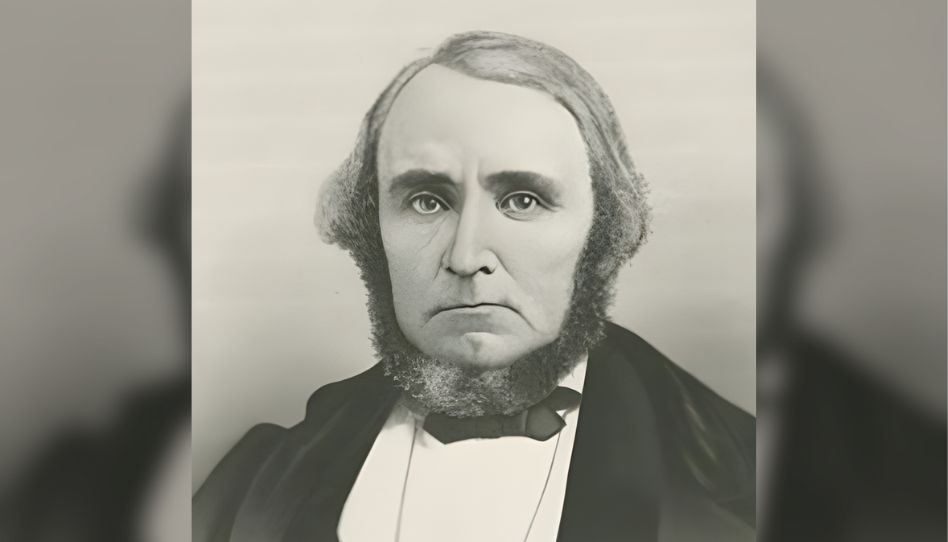
William was born in England in 1814 and joined The Church of Jesus Christ in 1837 after listening to missionaries. He soon immigrated to Nauvoo, where he became treasurer, temple recorder, and a close friend of Joseph and Emma Smith.
His life is intertwined with some of the most momentous moments of the Restoration. He was the author of the hymn Come, Come, Ye Saints, which has inspired generations to persevere in the face of adversity.
He also invented a primitive version of the odometer that helped pioneers on their journey to the Salt Lake Valley in 1847.
Beyond the historical facts, his life reflects what it means to be a faithful disciple in times of trial. Just as Alma counseled his son:
“8 Be patient in afflictions, for thou shalt have many; but endure them, for, lo, I am with thee, even unto the end of thy days.” (Doctrine and Covenants 24:8)
The Value of His Diary
William Clayton’s Nauvoo diary is much more than a record of dates and events—it is an intimate account of what it meant to live one’s faith amid persecution, the challenges of community life, and the direct teachings of a prophet.
Its pages detail unique aspects of Nauvoo life, including social events, the Smith family’s trials, and the beginnings of plural marriage. As the project’s editors noted, many of these accounts appear nowhere else.
For members of The Church of Jesus Christ of Latter-day Saints today, reading his testimony can help us better understand the cost of discipleship and feel gratitude for those who came before us. As the Lord taught Oliver Cowdery at the beginning of the Restoration:
“34 These words are not of men nor of man, but of me; wherefore, you shall testify they are of me and not of man;” (Doctrine and Covenants 18:34)
A Legacy for New Generations
The decision to publish this journal is a reminder that the Lord preserves the testimonies of His servants to strengthen the faith of future generations. William Clayton wrote in times of uncertainty and pain—but also of revelation, comfort, and hope.
Today, his words can speak to us, and as we read them, we can feel what the early Saints felt. Those words were written for us, just as Paul wrote:
For whatsoever things were written aforetime were written for our learning, that we through patience and comfort of the scriptures might have hope.
The publication of The Nauvoo Journal of William Clayton will undoubtedly be a treasure for those who love the history of The Church of Jesus Christ—but especially for those who seek to strengthen their faith in Jesus Christ through the testimonies of those who have gone before us.
Source: Press Room
Read more: masfe.org
Related Articles:
- First Vision: How Joseph Smith Saw God the Father and His Son
- How Joseph Smith’s First Vocal Prayer Terrified Hell
- Did Joseph Smith Falsely Prophesy About a Temple in Missouri in His Generation?
The post Historic Nauvoo Journal Reveals Life Among the Early Saints appeared first on Add Faith.
The New First Presidency Gives Its First Interview 21 Oct 10:08 AM (yesterday, 10:08 am)
In a rare and heartfelt conversation, the newly sustained members of the First Presidency of The Church of Jesus Christ of Latter-day Saints, President Dallin H. Oaks, President Henry B. Eyring, and President D. Todd Christofferson, sat down with award-winning journalist Jane Clayson Johnson at the Relief Society Building in Salt Lake City, Utah, on Wednesday, October 15, 2025, to discuss their hopes, challenges, and vision for the Church and the world.
This marked their first public interview since the official announcement of the new First Presidency. Topics ranged from the role of women in the Church and generational growth to global outreach and inclusion for those who feel distant.
A Christ-Centered Message
President Oaks began the interview by affirming his conviction about the central role of Jesus Christ in every person’s life. He referenced Mosiah 3:17, reminding that “there is no other name given nor any other way whereby salvation comes except through Christ, the Lord Omnipotent.”
“Jesus Christ is the way,” he declared.
President Eyring followed by sharing that discipleship brings the peace so many people seek amid the confusion of the world.
“My invitation is not only to ‘come and see,’ but to ‘come and become’, and find the peace that is so hard to find in today’s world.”
President Christofferson bore testimony that the Savior’s Resurrection stands as the greatest witness of His divinity and His power to fulfill every promise.
“He willingly offered Himself to be our Redeemer before the foundation of the world, and He has been, and will forever be, our Deliverer.”
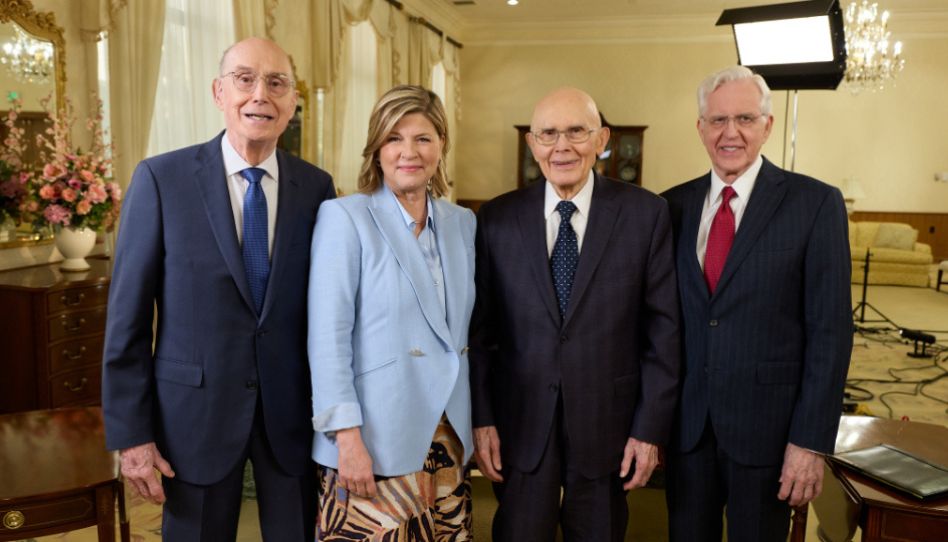
The Eternal Purpose of Family
President Oaks emphasized that one of the key messages he hopes to highlight is the eternal destiny of the family. He explained that the Church teaches about the divine nature and purpose of God’s children, which ultimately lead to an eternal family with a Heavenly Father and a Heavenly Mother.
“The very purpose of mortal life is to prepare for a celestial destiny within an eternal family organization,” he said.
President Christofferson added that the truths of the gospel apply to all families, large or small, and that lasting happiness is always rooted in the principles of home and eternal love.
See also: Does the Latter-day Saint Belief in the Existence of Heavenly Mother Make them Pagans/Polytheists?
Church Growth in a Changing World
When asked about the growth of the Church at a time when many identify as non-religious, President Oaks highlighted the power of the Restored Gospel to draw people toward truth.
“It is a gospel of joy, progress, and understanding of life’s purpose. Those who embrace its teachings find their lives happier, more meaningful, and more resilient in facing challenges.”
President Eyring noted that this growth will continue because people are still seeking hope and peace, and missionaries of the Lord offer exactly that.
President Christofferson also spoke about the ongoing gathering of Israel, both on earth and beyond the veil, emphasizing that the Spirit of the Lord is moving powerfully across nations.
“The Lord is making things happen. We may play a small role, but He is working through His power.”
The Role of Women in the Church
Addressing the question of women’s roles in the Church, the leaders agreed that when men’s and women’s perspectives unite, the result is closer to the divine ideal.
President Christofferson emphasized this synergy, while President Eyring described it as a profound form of service.
President Oaks acknowledged that the Church has not always fully utilized women’s gifts but assured that significant progress has been made over the past decade.
“When women’s voices and gifts are included, the work of the Lord moves forward in greater harmony and strength,” he said.
Read: Relief Society President: Women Can and Must Change the World
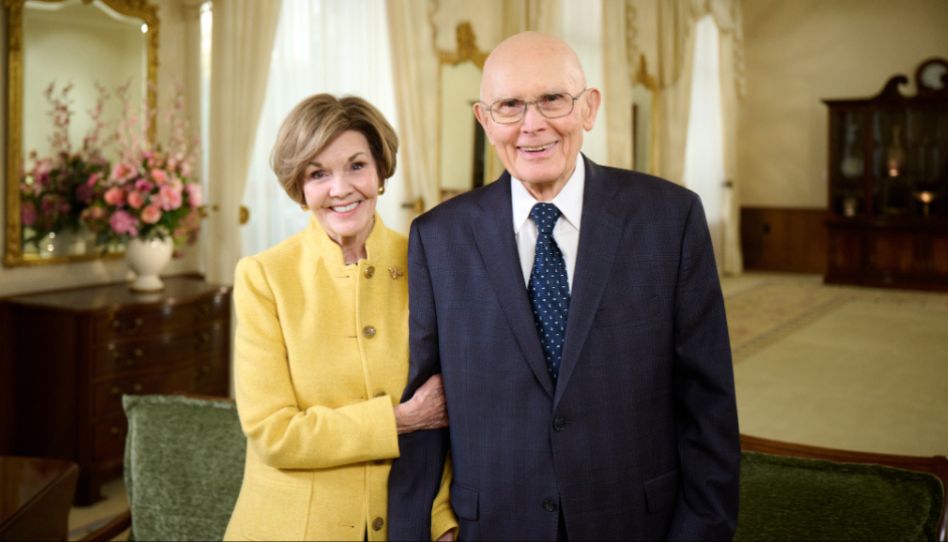
Inclusion and Belonging
When asked what fuels the Church’s growth despite the rise of religious disaffiliation, President Oaks responded that it is the power of the restored gospel itself.
“It offers meaning, happiness, and strength amid life’s trials.”
President Eyring added that people feel hope when they meet missionaries and witness living examples of faith.
Addressing those who feel disconnected or unseen within the Church, the message from the First Presidency was direct:
“God loves you,” said President Oaks. “Every person has a place in His plan.”
President Eyring evoked the image of Christ’s outstretched arms, always extended toward those on the margins, and encouraged prayer as a way to feel that spiritual embrace again. President Christofferson invited all to participate and contribute actively to the body of the Church.
Looking to the Rising Generation
In their message to youth and young adults, the leaders urged them to trust in God and stay on the covenant path. President Oaks promised that those who commit to that journey will find purpose, both eternal and profound blessings.
As the interview concluded, President Oaks repeated the phrase that anchored the conversation:
“Jesus Christ is the way.”
He quoted again from the Book of Mormon, reaffirming that salvation comes only through the Savior. President Eyring invited everyone to “come and become,” to live as disciples and experience lasting peace. President Christofferson reaffirmed that the Resurrection of Christ remains the most powerful evidence of His divine authority and love.
Finally, President Oaks bore his testimony, declaring that the restored gospel answers life’s deepest questions: who we are, why we are here, and where we are going.
“In the name of Jesus Christ,” he said, “I testify that those answers are found fully and beautifully within His restored Church.”
Read more at Newsroom
Related Articles:
- Catholic Church in Utah Congratulates President Oaks
- President Oaks’ Leadership Inspires Other Church Leaders
- The First Presidency of The Church of Jesus Christ Announced
The post The New First Presidency Gives Its First Interview appeared first on Add Faith.
President Oaks’ Leadership Inspires Other Church Leaders 21 Oct 6:08 AM (yesterday, 6:08 am)
When President Dallin H. Oaks leadership was recognized as he was sustained as the 18th President of The Church of Jesus Christ of Latter-day Saints on October 14, 2025, the moment felt both historic and deeply personal.
For President Jeffrey R. Holland, the feeling was especially tender.
“He is the complete man of God, and I love him,” President Holland said, his voice filled with emotion.
Those few words captured what many feel — that President Dallin H. Oaks’ leadership is not defined only by his accomplishments, but by the Christlike spirit with which he has served.
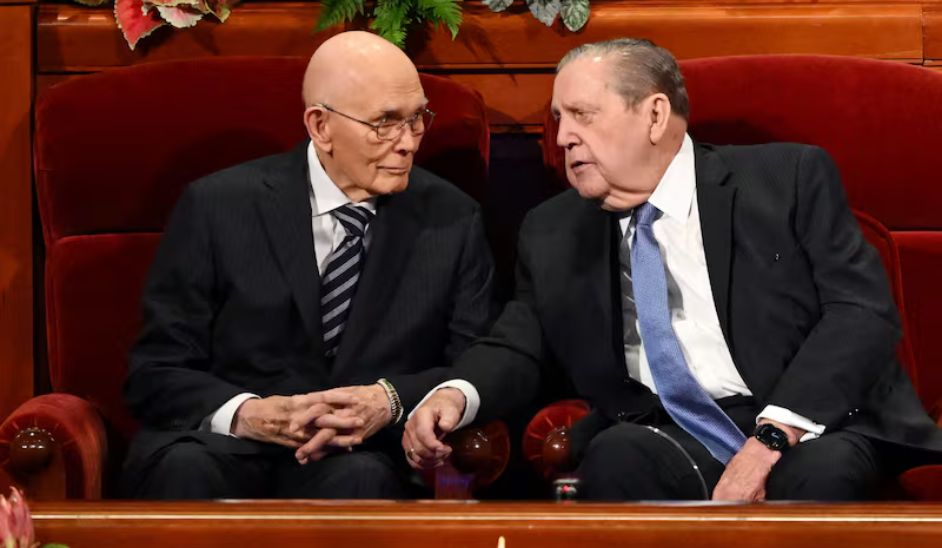
A Friendship Built On Faith And Service
The friendship between President Oaks and President Holland began more than fifty years ago at Brigham Young University. In 1974, President Oaks, then BYU’s president, invited a young Jeffrey R. Holland to dinner. The two immediately connected, sharing a love for learning, faith, and the gospel.
A few months later, President Oaks walked into Brother Holland’s office in Salt Lake City with an unexpected offer: the position of dean of Religious Education at BYU. President Holland accepted on the spot. That decision began a lifelong association grounded in mutual respect and shared discipleship.
“I have never been more humbled than to follow in the footsteps of Dallin Oaks,” President Holland later reflected.
From their days at the university to their service in the Quorum of the Twelve Apostles, and now in the First Presidency, their friendship has stood as a witness of enduring brotherhood in the Lord’s work.
Guided By Calm Faith And Steady Action
Those who know President Dallin H. Oaks’ leadership best often describe him as both calm and decisive. President Holland noted that while President Oaks is “hard to ruffle,” he is quick to act when challenges arise.
“If something goes wrong, he immediately spins into action,” President Holland said.
This blend of composure and determination has defined President Dallin H. Oaks’ leadership, showing how faith and reason work together in his ministry.. There have been times, President Holland recalled, when President Oaks paused meetings to invite everyone to pray again — not because they hadn’t prayed before, but because they needed renewed guidance.
“He has great faith,” President Holland said. “He is wonderful to turn things over to the Lord.”
Strength Refined Through Years Of Discipleship
Those who serve alongside President Oaks testify that his faith is matched by wisdom gained through decades of experience. President Henry B. Eyring, now First Counselor in the First Presidency, said he feels “blessed to live in a time where I can again follow in perfect confidence a prophet of God.”
President D. Todd Christofferson, Second Counselor in the First Presidency, added that President Dallin H. Oaks’ leadership shows “a man of action”— someone who listens, analyzes, and then moves forward with purpose.
“He knows how to pause, how to be quiet, how to listen to the Spirit’s voice,” President Christofferson said. “Because he acts on those impressions, the Lord gives him a constant flow of direction.”
That quiet spiritual discipline, paired with intellect and empathy, has prepared him to lead the Church in what President Christofferson called “a difficult and uncertain time.”
Remembering The Forgotten And Lifting The Humble
Among the many personal details that reveal President Oaks’ heart is a painting in his office titled The Forgotten Man by Maynard Dixon. The artwork, depicting a weary man sitting unnoticed on a city curb, reminds him of the Lord’s love for those who feel forgotten.
“He is forgotten by the passing crowd,” President Oaks once explained, “but his Heavenly Father knows he is there.”
This sensitivity to the downtrodden has shaped President Dallin H. Oaks’ leadership. Relief Society General President Camille N. Johnson said his compassion is rooted in his own childhood. Having lost his father at a young age, he was raised by a faithful, resilient mother—an experience that made him especially aware of the struggles faced by single mothers, women, and children.
“President Oaks has a great sensitivity to women,” President Johnson said. “He wants them to know how valued and important they are.”
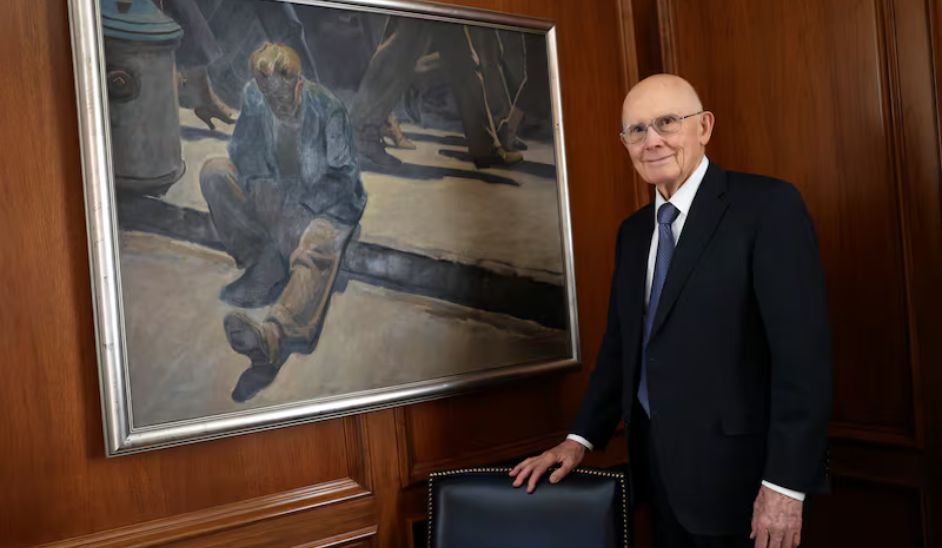
A Teacher Who Listens And Leads With Love
Primary General President Susan H. Porter described President Dallin H. Oaks’ leadership as “warm and approachable,” a style that invites open discussion.
“He was always very engaged,” she said. “It was inspiring to watch how supportive and deferential he was to President Nelson.”
President Porter also remembered President Oaks’ account of watching President Russell M. Nelson transition from Apostle to Prophet in 2018. Realizing the magnitude of that change, President Oaks said he “tightened his seatbelt a few more notches” and prepared for an exciting journey ahead.
That sense of joy in service, President Porter said, is one of the hallmarks of his ministry. “He reminds us that serving the Lord should be joyful — not heavy.”
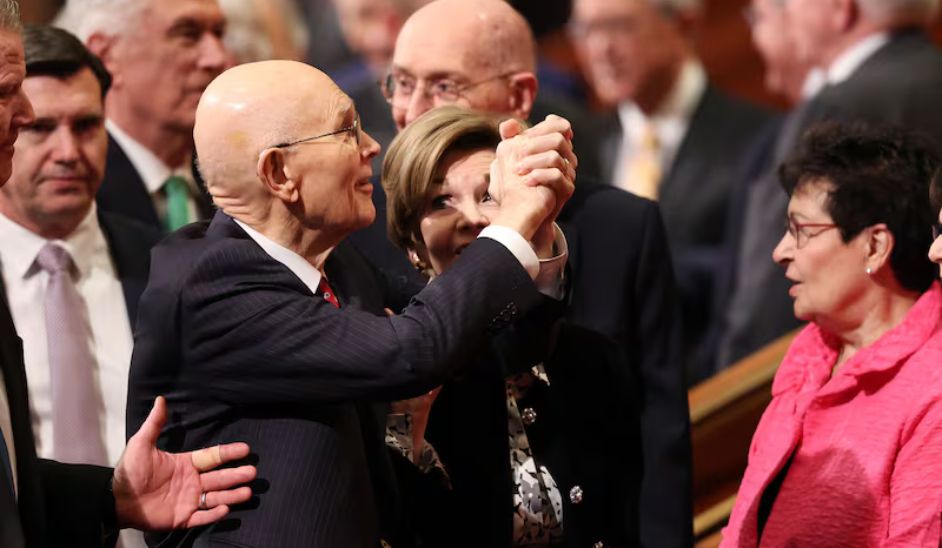
A Legacy Rooted In Faith, Learning, And Freedom
Before his call to full-time Church service, President Oaks built a distinguished career in law and education. A former Utah Supreme Court justice and BYU president, he was once considered for appointment to the U.S. Supreme Court. Yet his greatest influence has come through his defense of religious freedom and his faith-filled leadership within the Church.
President Johnson noted that his legal background continues to bless the global Church.
“He understands the constitutional protections that allow the Church to thrive,” she said. “His insight into principles of freedom will be invaluable as he leads the Lord’s Church.”
But beyond law or leadership, President Oaks is known for his ministry through the written word. Many Church employees have received personal, handwritten notes after talks or meetings — messages filled with kindness and gratitude.
“It’s one of the ways he ministers,” President Porter said. “His letters are thoughtful, specific, and full of the Spirit.”
What His Example Means For Us Today
President Dallin H. Oaks’ leadership reminds us that discipleship requires both conviction and compassion. It means standing firm in truth while seeing others through the eyes of mercy.
As President Christofferson observed, the Lord has raised President Oaks “for a time when the world needs a clear and steady hand on the tiller.”
And as President Holland testified so simply and powerfully:
“He is the complete man of God.”
For all who follow the Savior, that description is both a tribute and an invitation — to live as President Dallin H. Oaks’ leadership exemplifies: with faith unshaken, love unfeigned, and an unwavering commitment to the Lord Jesus Christ.
See Also:
- Leadership Structure of the Church Of Jesus Christ of Latter-day Saints
- Church Leaders on Mental Health
- The First Presidency Dissolved: Understanding Succession
The post President Oaks’ Leadership Inspires Other Church Leaders appeared first on Add Faith.
Catholic Church in Utah Congratulates President Oaks 20 Oct 6:01 AM (2 days ago)
On Tuesday, October 14, 2025, the Cathedral of the Madeleine, the principal seat of the Catholic Church in Utah, sent a message of congratulations to President Oaks of The Church of Jesus Christ of Latter-day Saints upon his call as the 18th President of The Church of Jesus Christ of Latter-day Saints.
In a statement shared on its official channels, the Cathedral expressed appreciation for the life of service and faith of the new leader of The Church of Jesus Christ of Latter-day Saints, highlighting his example of principle, commitment to families, and contribution to strengthening communities in Utah and around the world.
“Congratulations To LDS President Dallin H. Oaks As the mother church for Catholics in Utah, the Cathedral of the Madeleine extends heartfelt congratulations to President Dallin H. Oaks on his calling as President of The Church of Jesus Christ of Latter-day Saints.”
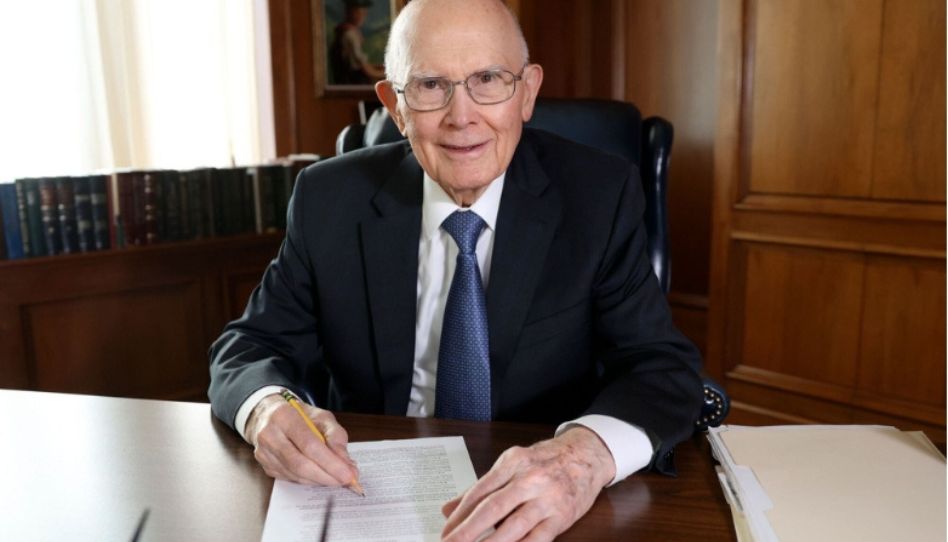
The note goes on to highlight President Oaks’ role as a respected voice of faith and values and thanks him for his dedication over the years:
“We are grateful for his many years of service, his dedication to strengthening families and communities, and his consistent witness of belief in God.”
The Cathedral also highlighted the spirit of friendship and cooperation that has characterized the relationship between the two religious communities:
“The Cathedral of the Madeleine values the spirit of friendship and mutual support that exists between our communities. We give thanks for the collaboration and generosity of The Church of Jesus Christ of Latter-day Saints, which continues to enrich the life of our Cathedral.”
Finally, the message concludes with a prayer for President Oaks:
“We pray that God may bless President Oaks with wisdom, health, and strength as he leads his church into a new chapter of faith and service.”
A Gesture of Respect and Unity
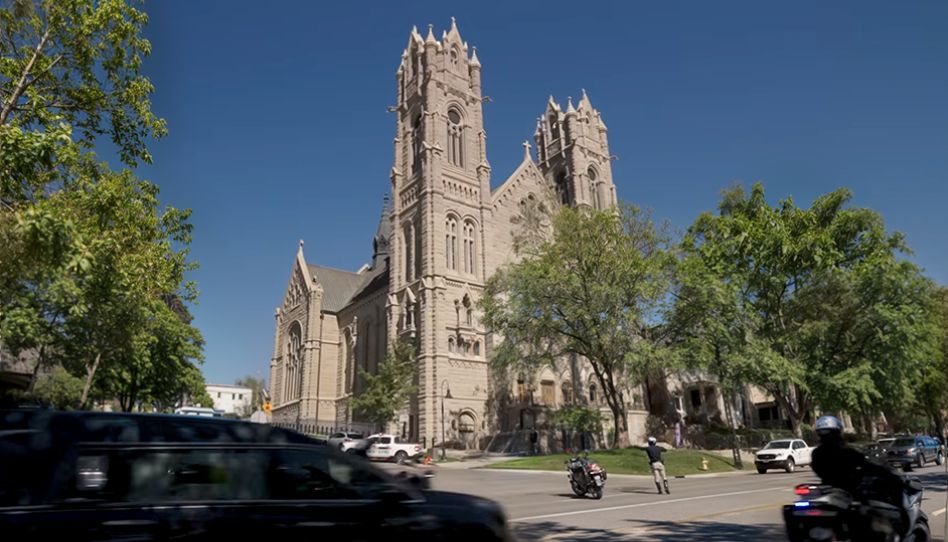
The Cathedral of the Madeleine is located in the heart of Salt Lake City. Over the years, it has maintained a respectful and collaborative relationship with President Oaks and The Church of Jesus Christ of Latter-day Saints. Their partnership is especially evident in community service and interfaith support.
This gesture joins other acts of thoughtfulness that have marked the history of the two communities. Following the passing of President Russell M. Nelson on October 1, 2025, the Cathedral rang its bells as a sign of respect and tribute, as it has done on other occasions for renowned religious leaders.
These gestures reflect the spirit of brotherhood that unites faith communities in Utah, where interfaith respect, empathy, and cooperation continue to exemplify unity amid diversity.
Related Articles:
- The First Presidency of The Church of Jesus Christ Announced
- Dallin H. Oaks: The New Prophet and Church President
- Leadership Structure of the Church Of Jesus Christ of Latter-day Saints
The post Catholic Church in Utah Congratulates President Oaks appeared first on Add Faith.
What Is LDS General Conference? A Global Gathering of Faith 16 Oct 6:00 AM (6 days ago)
Twice a year, millions of members and friends of The Church of Jesus Christ of Latter-day Saints unite to listen to inspired messages of hope and renewal. More than just a meeting, LDS General Conference Talks is a worldwide gathering of faith where believers receive spiritual guidance from living prophets and apostles. It reminds all that God still speaks today—and that His voice brings peace and purpose to a changing world.
Purpose of General Conference
The purpose of LDS General Conference Talks is to strengthen faith in Jesus Christ and invite personal revelation. During each session, members receive guidance from prophets and apostles, helping them navigate life with courage and clarity. Moreover, General Conference renews spiritual commitment, encouraging discipleship and service. It is open to everyone—of all backgrounds and beliefs—making it one of the most inclusive Church of Jesus Christ events.
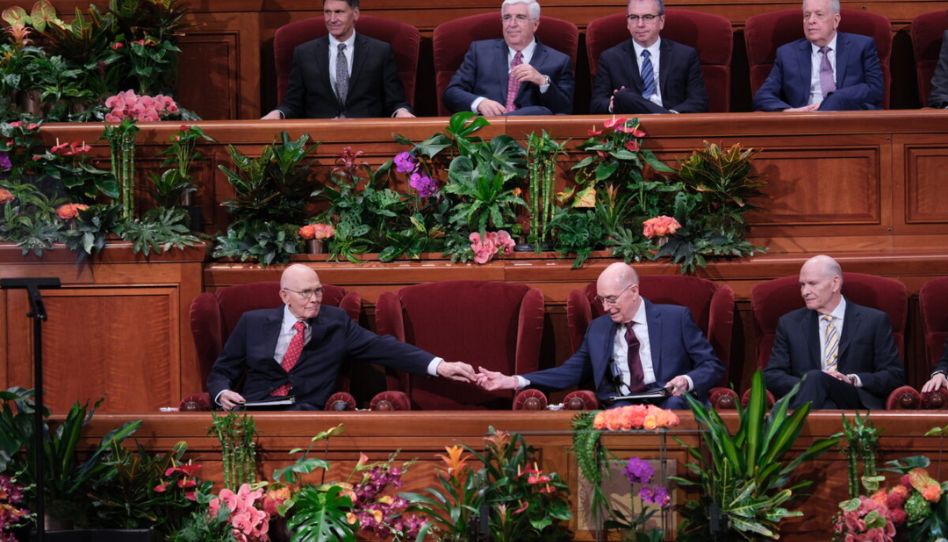
History of General Conference
The first Latter-day Saint conference was held on June 9, 1830, soon after the Church was organized. Joseph Smith and early members gathered to receive revelation and direction. As the Church grew, conferences expanded in scale and structure. By the mid-1800s, regular gatherings were held in Salt Lake City, Utah.
In 2000, the Church began holding conference sessions in the modern Conference Center, which seats over 21,000 people. The Conference Center now serves as the primary venue for General Conference.
Today, thanks to translation and streaming technology, LDS General Conference Talks reach millions worldwide in real-time.
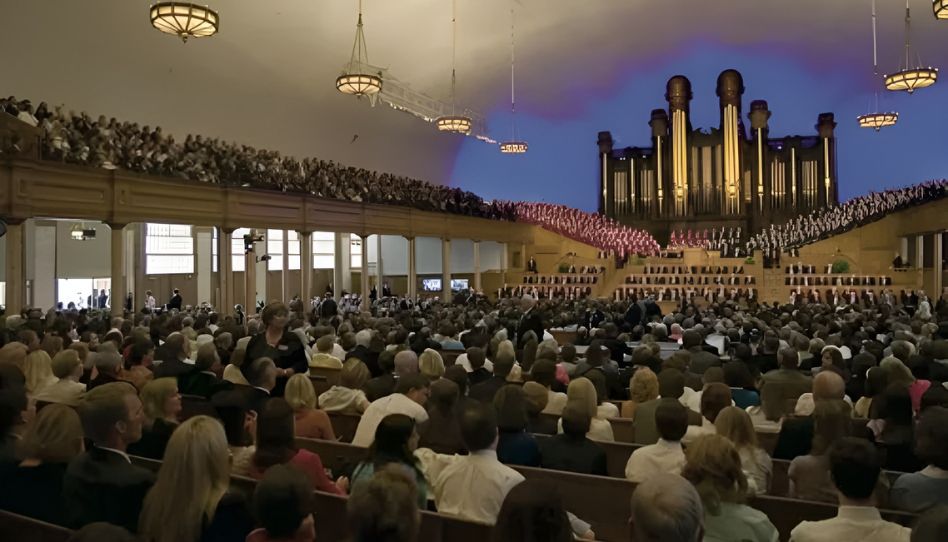
When and Where It Happens
General Conference is held twice annually, in April and October, and is televised live from the Conference Center in Salt Lake City, Utah. Through television, radio, internet streaming, the Gospel Library app, and other media platforms, millions can participate regardless of location.
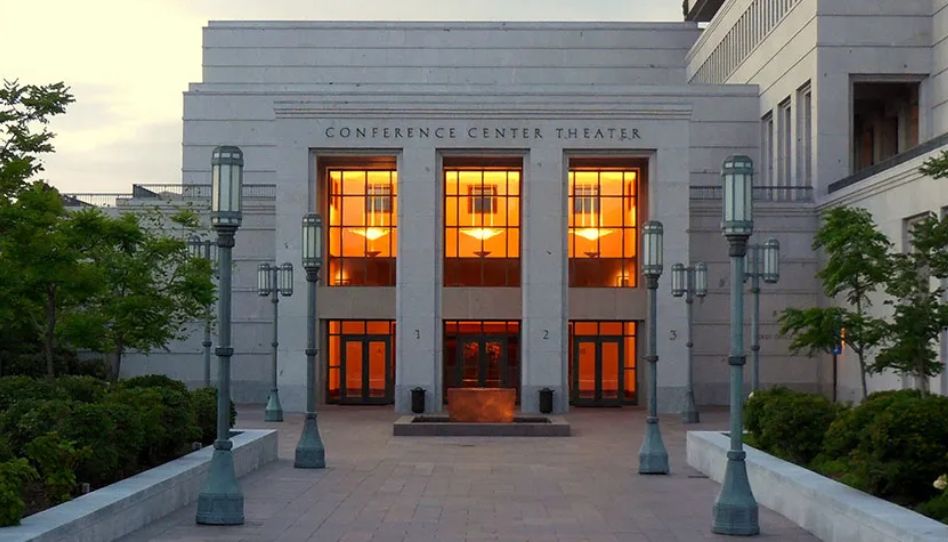
Structure of General Conference
Each LDS General Conference Talks includes five sessions over two days:
- Saturday Morning & Afternoon
- Saturday Evening
- Sunday Morning & Afternoon
Every session features LDS General Conference talks, prayers, and sacred hymns sung by the Tabernacle Choir at Temple Square.
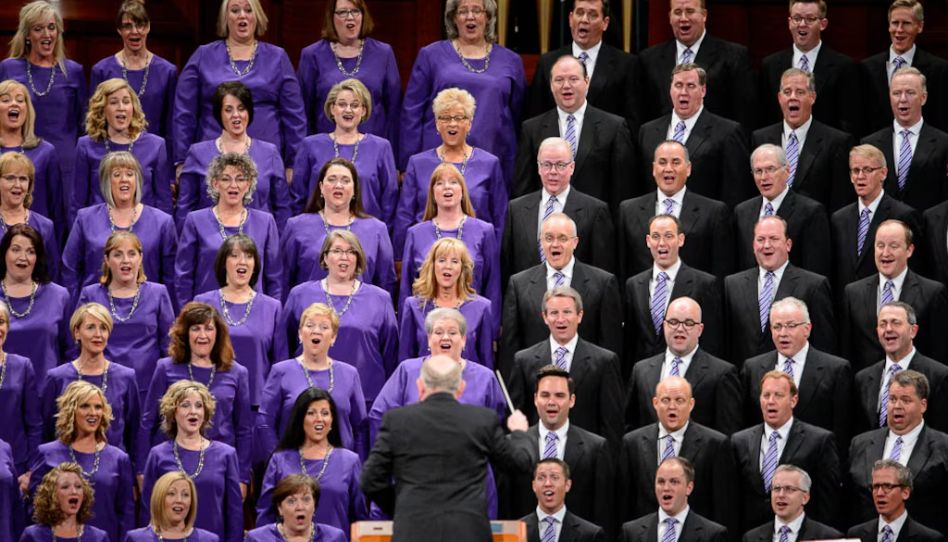
Who Speaks at General Conference
Speakers include the President of the Church, his counselors in the First Presidency, and members of the Quorum of the Twelve Apostles. Other General Authorities and auxiliary leaders like Relief Society and Young Women also speak. Their messages emphasize doctrine, repentance, service, and family unity.
President Russell M. Nelson, the current prophet of the Church, continues the divine pattern seen throughout scripture — that God reveals His will through living prophets. As Amos taught, “Surely the Lord God will do nothing, but he revealeth his secret unto his servants the prophets” (Amos 3:7). His inspired messages, along with those of past prophets, are preserved in the General Conference collection for all to study and follow.
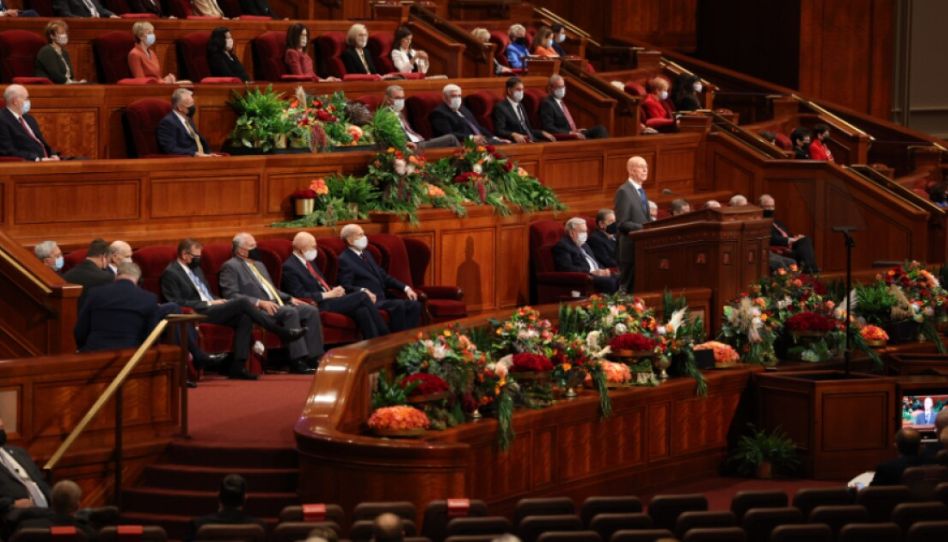
How Members Participate
Members prepare spiritually, listen with open hearts, and often take notes. Families gather at home or in meetinghouses to watch together. Afterwards, talks are studied throughout the year in homes, lessons, and devotionals.
Access the archive of General Conference talks on the Church website to revisit specific messages.

Spiritual Impact and Global Reach
LDS General Conference Talks inspires worldwide unity. Messages are translated into over 90 languages and broadcast to millions globally. After the event, talks are published on ChurchofJesusChrist.org and in the Liahona magazine. General Conference is more than an event—it connects members globally and strengthens faith across continents.

A Worldwide Renewal of Faith
LDS General Conference talks are not merely a meeting—it’s a time of spiritual renewal and testimony. Each session confirms that prophets and apostles continue to lead. As hearts open to God’s word, individuals feel prompted to change, repent, and draw closer to Christ. For believers everywhere, this biannual gathering keeps Christ at the center.
Related Articles:
- 20 Messages That Will Inspire You Before General Conference — encouraging preparation and spiritual readiness before Conference
- October 2025 General Conference Saturday Morning Session — a recent session recap with key highlights and remarks
- October 2025 General Conference Saturday Afternoon Session — insights and spiritual messages from that session
- No New Temples Announced in October 2025 General Conference — news and reflections on temple announcements (or the lack thereof) at the recent conference
The post What Is LDS General Conference? A Global Gathering of Faith appeared first on Add Faith.
President Nelson 200 Temples: A Worldwide Tour of Faith 15 Oct 6:10 AM (7 days ago)
Millions of Saints rejoiced when President Nelson 200 temples were announced—each one a sacred promise that heaven’s blessings reach every corner of the earth.
From Africa to Asia, temples are rising as symbols of God’s love, unity, and gathering power through The Church of Jesus Christ of Latter-day Saints.
Each temple represents more than a building—it is a house of faith, covenant, and divine connection.
Since becoming President of the Church in 2018, President Russell M. Nelson has led a remarkable era of temple growth and spiritual renewal, strengthening members across the globe.
Why Temples Matter So Much
Temples are sacred houses of the Lord, where Latter-day Saints make covenants and perform ordinances that unite families eternally.
Unlike regular meetinghouses, temples are places of peace, revelation, and eternal perspective.
President Nelson once taught,
“The temple lies at the center of strengthening our faith and spiritual fortitude.”
With every new temple, that center grows stronger—bringing the light of Christ closer to millions.
From One to Two Hundred: A Prophetic Journey
In 1836, the early Saints rejoiced as they dedicated their first temple in Kirtland, Ohio.
Today, nearly two centuries later, the announcement of President Nelson 200 temples represents a miracle of growth and gathering.
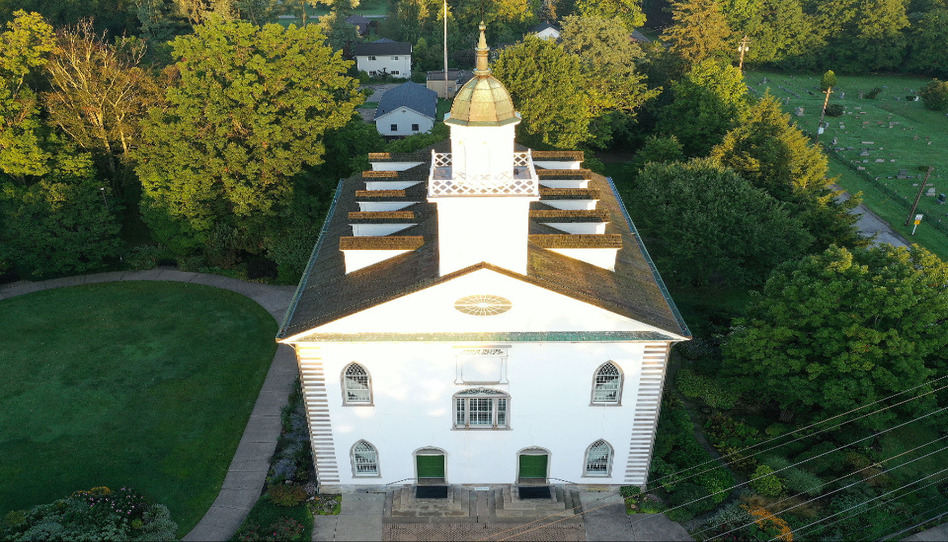
Each location tells a story of faith:
-
Africa: Temples rising in Nairobi, Lagos, and Cape Coast.
-
South America: New houses of the Lord in Chile, Argentina, and Brazil.
-
Asia and the Pacific: Temples in Bangkok, Dubai, and Okinawa.
-
Europe and North America: Sacred sites closer than ever before.
Every groundbreaking, dedication, and open house marks a chapter in this unfolding global story of covenant belonging.
Temples That Connect Heaven and Earth
Each temple is designed to bring the blessings of eternity to every family, regardless of geography or language.
Inside, members perform sacred ordinances such as:
-
Baptisms for the dead
-
Endowments
-
Sealings of families for eternity
A Spiritual Milestone for The Church of Jesus Christ of Latter-day Saints
President Russell M. Nelson’s vision marks a defining moment for
The announcement of 200 temples fulfills prophecies that in the latter days,
“the earth shall be filled with the knowledge of the Lord.”
Each temple stands as a beacon of faith and gathering, showing that God continues to guide His people in preparation for the return of Jesus Christ.
What President Nelson 200 Temples Mean for Us Today
For Church members everywhere, these new temples are more than news—they are personal invitations to come closer to the Savior.
Whether you live near an upcoming temple or follow each dedication online, you are part of a sacred moment in history.
Temples remind us that God’s work is ongoing, His promises are sure, and His love reaches every nation and heart.
Inspiring the World, One Temple at a Time
From Kirtland to Kenya, from Salt Lake to São Paulo, the Lord’s house stands as a witness of eternal truth and unity.
As we watch President Nelson 200 temples rise across the world, we see not just stone and spire—but faith, hope, and divine progress.
The invitation remains the same: Come to the temple. Feel God’s love. Build your foundation on Christ.
Related Articles:
- Why do Latter-day Saints have multiple temples when the Bible only allowed one? Ep. 86
- How to Prepare for a Temple Sealing After Adopting
- LDS Temple Locations Increasing, Reaching More Members
The post President Nelson 200 Temples: A Worldwide Tour of Faith appeared first on Add Faith.
The First Presidency of The Church of Jesus Christ Announced 15 Oct 5:00 AM (7 days ago)
The First Presidency was announced on Tuesday, October 14, 2025, following the passing of President Russell M. Nelson. As is customary, the previous presidency was dissolved, and new leadership was prayerfully selected through divine inspiration. The announcement came during a live broadcast from Salt Lake City, Utah, marking a sacred and historic moment for Latter-day Saints worldwide. President Dallin H. Oaks was sustained and set apart earlier in the day, as the Prophet and President of the church.
A Divinely Guided Transition of Leadership
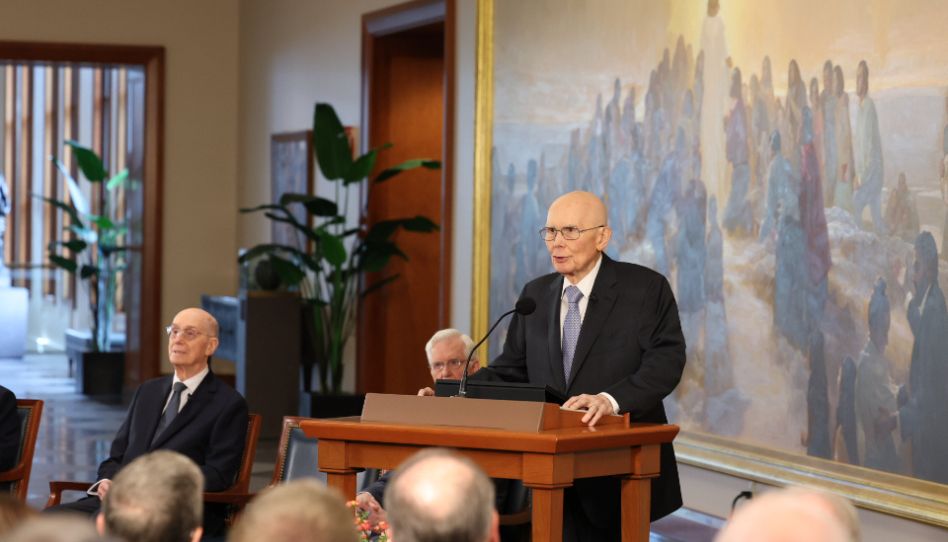
President Dallin H. Oaks was called to serve as the 18th President of The Church of Jesus Christ of Latter-day Saints, succeeding President Russell M. Nelson, who passed away on September 27. During the announcement, President Oaks humbly declared,
“I accept with humility the responsibility that God has placed upon me and commit my whole heart and soul to the service to which I’ve been called.”
His words reflected a deep sense of humility and faith, setting the tone for a presidency devoted to service and discipleship.
President Henry B. Eyring and President D. Todd Christofferson Called as Counselors
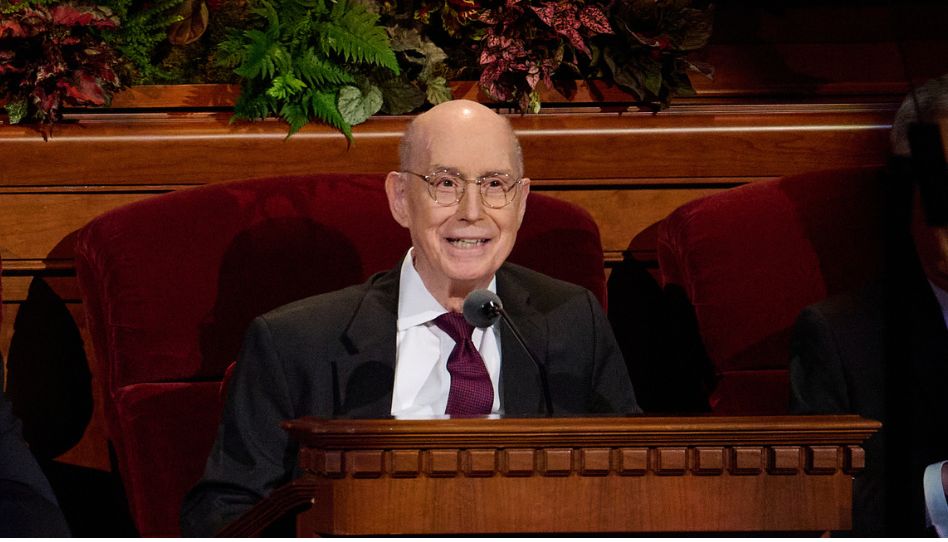
Serving alongside President Oaks are President Henry B. Eyring as First Counselor and President D. Todd Christofferson as Second Counselor. Together, they form the First Presidency, a presidency united by faith and a shared commitment to Jesus Christ.
President Henry B. Eyring expressed gratitude as he accepted his call:
“I’m grateful for the trust, and grateful for the people whose faith I know will sustain us in this great work of the Restoration and the final preparation of the Lord’s Church for His coming.”
He testified that God truly inspired President Oaks’ call as the 18th President.
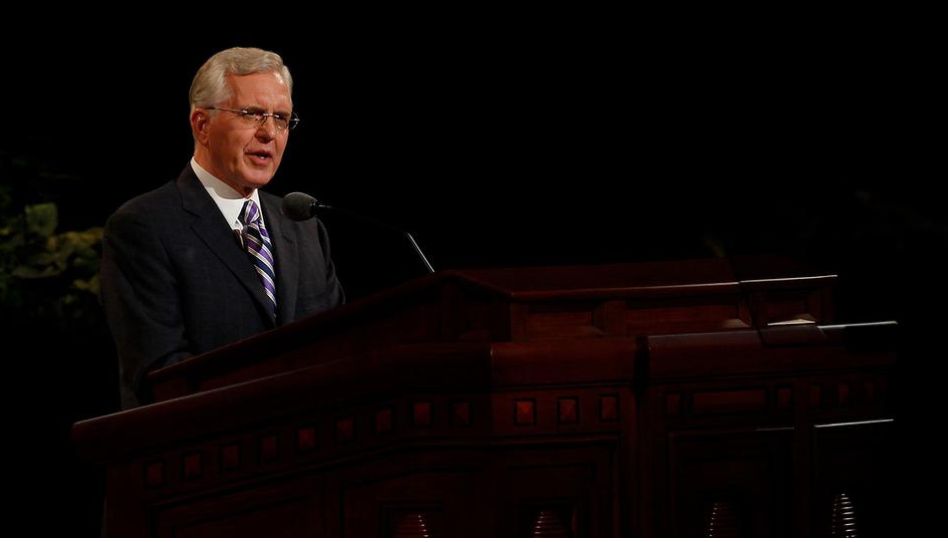
President D. Todd Christofferson also shared his feelings:
“I recognize that I’m not called to be honored, but called to serve.”
He bore witness of Jesus Christ, saying,
“It is Jesus Christ who is the head of the Church. I know that. I bear witness of it. I’m more sure of it every day. I know Him. I honor Him. I pledge my life and discipleship to Him.”
President Jeffrey R. Holland Leads the Quorum of the Twelve Apostles
Elder Jeffrey R. Holland was sustained as the new President of the Quorum of the Twelve Apostles. Speaking on behalf of his brethren, he testified of their love and confidence in President Oaks:
“We love [President Oaks]. We have known him. We’ve watched him be prepared and have had the confirmation that that is the Lord’s will this day.”
His testimony reflected the unity and divine harmony within the leadership of the Church.
A Global Church Led by Revelation
While closing the event, President Oaks reminded members of the Church’s worldwide mission and divine purpose.
“We do not have the answers to all the world’s problems. They have not been revealed. But what we do know is that we are all children of heavenly parents, and that we are called to serve all of the children of God.”
His words emphasized compassion, inclusion, and service—principles at the heart of the restored gospel of Jesus Christ.
A Presidency United in Purpose
The announcement of the First Presidency marks a sacred moment of continuity and revelation. Under the inspired leadership of President Dallin H. Oaks, President Henry B. Eyring, and President D. Todd Christofferson, the Church continues to move forward in faith. Their unity and devotion testify that the Lord continues to guide His Church through living prophets and apostles. For Latter-day Saints everywhere, this moment reaffirms that revelation is ongoing and that faith in Jesus Christ remains the foundation of His restored Church.
Source: newsroom.churchofjesuschrist.org
Related Video:
@add_faith The new First Presidency will be composed as follows: Dallin H. Oaks, as President, Prophet, Seer, and Revelator of The Church of Jesus Christ of Latter-day Saints; Henry B. Eyring, as First Counselor; and D. Todd Christofferson, as Second Counselor. #addfaith #LDS Presidentdallinhoaks #Dallinhoaks #churchofjesuschrisroflatterdaysaints
Related Articles:
- Dallin H. Oaks: The New Prophet and Church President
- The First Presidency Dissolved: Understanding Succession
- Who Is Dallin H Oaks? Biography of the New LDS Church Prophet
The post The First Presidency of The Church of Jesus Christ Announced appeared first on Add Faith.
Dallin H. Oaks: The New Prophet and Church President 14 Oct 11:06 AM (8 days ago)
A new chapter has begun in the history of The Church of Jesus Christ of Latter-day Saints. Dallin H. Oaks was announced as the 18th President of the Church of Jesus Christ of Latter-day Saints.
For decades, President Oaks has been known for his sharp intellect, steady faith, and unwavering defense of truth. Now, as he takes on the sacred mantle of prophet, seer, and revelator, members across the globe look to him for inspired direction and reassurance in a world of growing uncertainty.
This is not just the story of a new leader. It is the story of a man whom God has been preparing for a lifetime. From a small town in Utah to the highest offices of law, education, and faith, Dallin H. Oaks’s journey reveals how the Lord molds His servants through experience, faith, and quiet devotion.
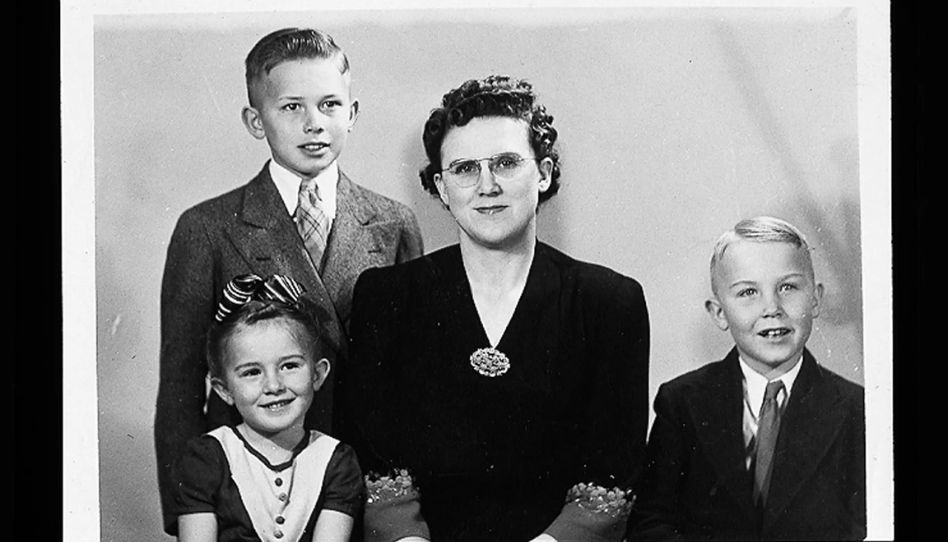
A Life of Faith, Discipline, and Service
Dallin Harris Oaks was born on August 12, 1932, in Provo, Utah. His early years were shaped by loss. His father, a physician, passed away when Dallin was just seven years old, leaving his mother to raise the family alone. Those experiences built in him a sense of resilience and quiet strength that would guide him throughout his life.
A man of exceptional intellect, President Oaks graduated in accounting from Brigham Young University (BYU) in 1954 with high honors. He went on to earn his law degree from the University of Chicago in 1957, where he served as editor-in-chief of the University of Chicago Law Review. Shortly after, he clerked for Chief Justice Earl Warren of the United States Supreme Court, one of the most prestigious opportunities a young lawyer can receive.
He later taught law at the University of Chicago and became a respected legal scholar. But his leadership skills soon led him to another kind of stewardship.
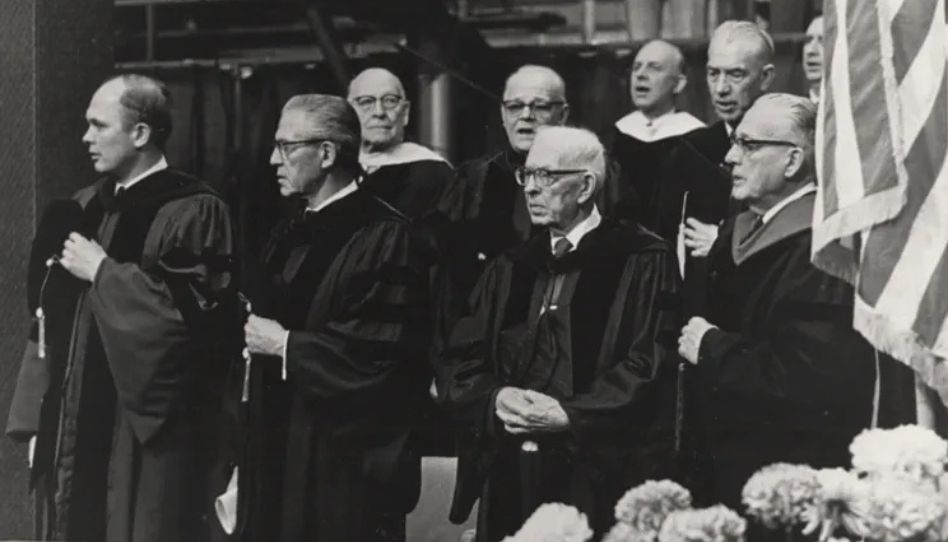
Leadership
In 1971, Dallin H. Oaks became president of Brigham Young University. During his nine-year tenure, he strengthened academic programs, promoted spiritual education, and expanded the university’s global influence. His thoughtful and principled leadership left a lasting mark on BYU’s mission to blend faith with scholarship.
In 1980, he accepted an appointment as a justice of the Utah Supreme Court, where he served with integrity and fairness. Many thought his path would continue in the judiciary for decades, but God had another plan.
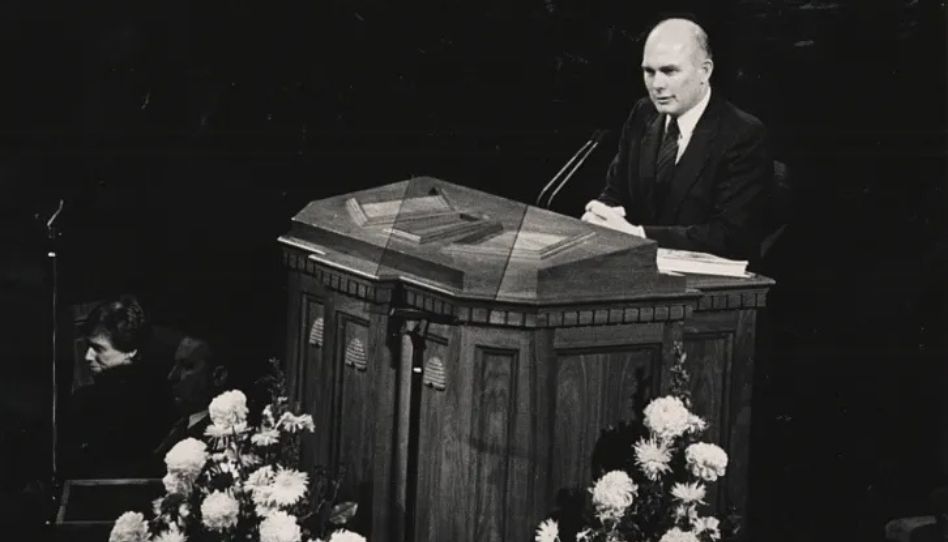
Called to the Apostleship
In April 1984, Dallin H. Oaks was called to the Quorum of the Twelve Apostles. Leaving behind a distinguished legal and academic career, he devoted himself fully to the ministry of the restored gospel. Over the decades, he became known for his clear doctrinal teaching, his defense of religious liberty, and his deep understanding of the plan of salvation.
His talks often addressed topics of family, morality, and discipleship with courage and compassion. He has been a steady voice reminding the Saints that “the commandments of God are fixed truths,” even in a world that constantly shifts.
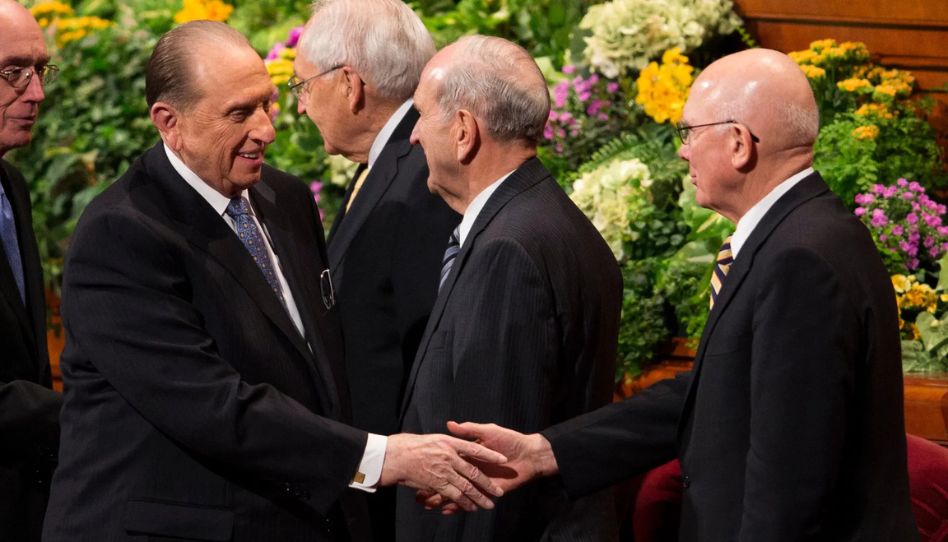
Years in the First Presidency
In January 2018, the Church called President Oaks as First Counselor in the First Presidency, where he served alongside President Russell M. Nelson. In this role, he helped guide major administrative and spiritual initiatives, from strengthening the home-centered Church to expanding the global reach of temples and missionary work.
Throughout his service, leaders and members have recognized President Oaks for his firm yet humble leadership, as he always emphasizes putting the Savior first. Then again, his combination of intellect, faith, and fairness has prepared him for this new and sacred responsibility.
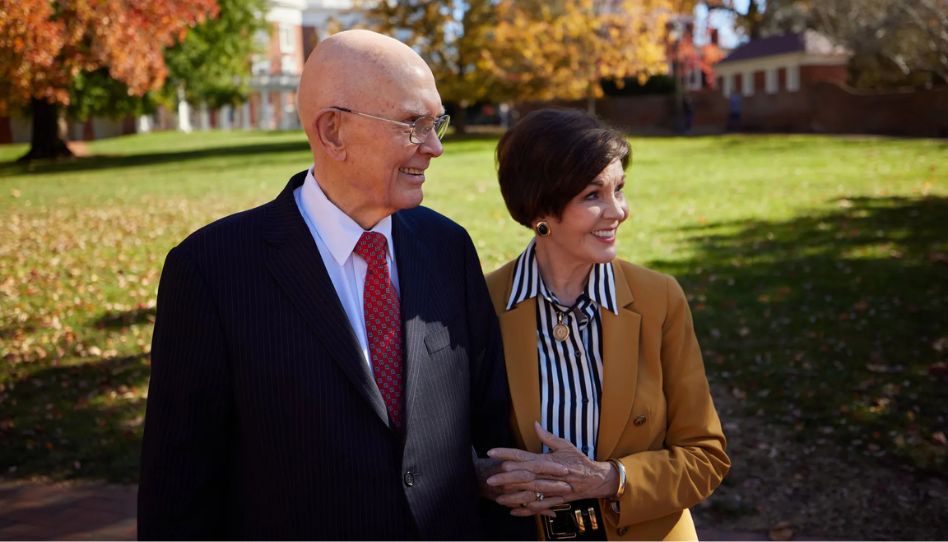
A Prophet for This Time
Now, as the senior Apostle and successor in the prophetic line, Dallin H. Oaks assumes the mantle of President of the Church of Jesus Christ of Latter-day Saints. His calling as prophet, seer, and revelator signifies both continuity and divine direction for the future.
President Oaks steps into this role during a period of moral complexity and global uncertainty. Yet his steady hand, spiritual wisdom, and lifelong devotion to truth make him a leader prepared for precisely such a time.
His life exemplifies how the Lord shapes him, molding him through faith, experience, and obedience into a vessel ready to do His will. Those who know his story see a man who has faced loss, sacrifice, and challenge, yet whose faith has remained unwavering.
As members mourn the passing of the prophet Russell M. Nelson, they also look forward with gratitude and trust, believing that the same God who calls His servants will guide His Church through them.
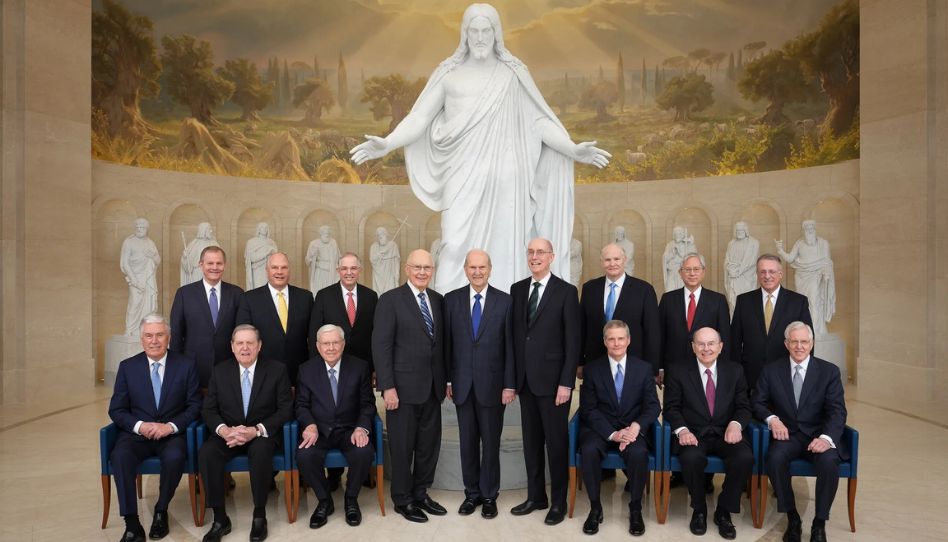
Looking Ahead with Faith
For those who have watched President Oaks over the years, as a scholar, judge, apostle, and counselor, his calling now as prophet feels, undeniably, like a natural unfolding of a lifelong preparation. His life testifies that the Lord shapes His leaders long before the people sustain them.
As this new season begins, members around the world study his messages, listen to his counsel, and seek the Spirit to confirm the divine nature of his calling.
The announcement of Dallin H. Oaks as the new prophet of The Church of Jesus Christ of Latter-day Saints invites all to renew their own commitment to the gospel, to follow the living prophet, trust in continuing revelation, and walk in faith toward the Savior.
Related Article:
- The Life of Dallin H. Oaks
- President Dallin H. Oaks Responds to Loss and Tragedy
- President Oaks: 10 Things the Lord Restored Through Joseph Smith
The post Dallin H. Oaks: The New Prophet and Church President appeared first on Add Faith.